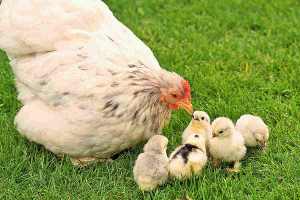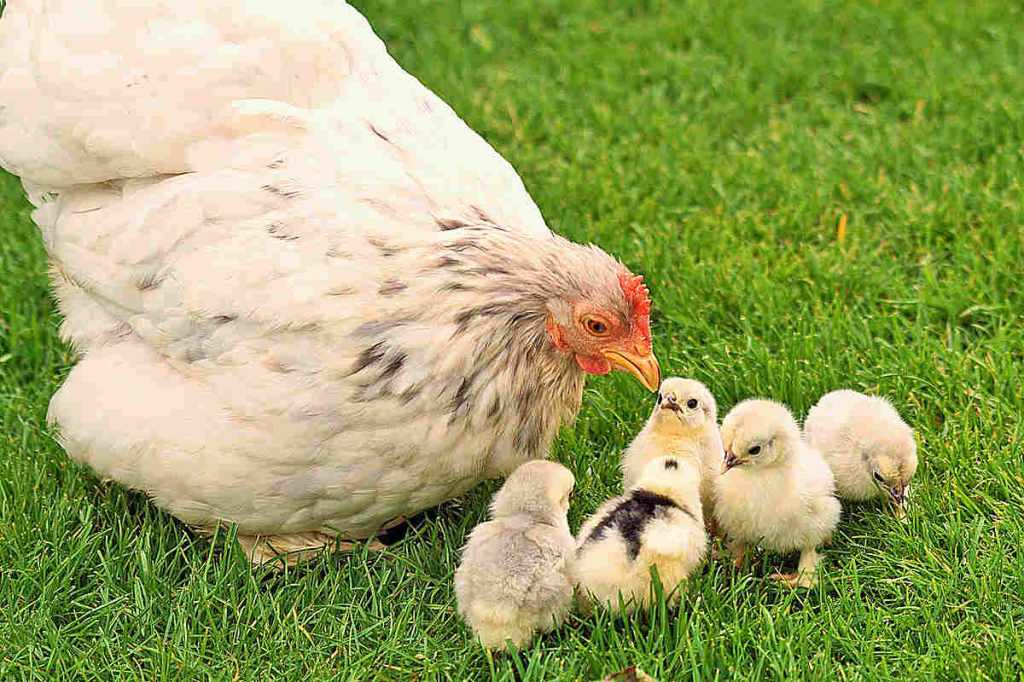
If the American poultry keepers of today were to see the Cochin of the mid-1800s, they would hardly recognize the breed! The old Cochin was a tall, rangy bird with relatively sparse feathering on its gangling shanks. However, it had a beautiful ginger color that, combined with its impressive size and considerable laying ability, attracted considerable attention when it arrived in the United States and Great Britain in the 1840s.
There is a notion that the Cochin hails from Vietnam, where a French colony named Cochin-China boasted a breed of feather-footed fowl. Actually, the ancestor of the modern Cochin came from China proper, where it was known as the Shanghai (as was the fledgling Brahma, just to keep it confusing). Queen Victoria is credited with calling the chickens Cochin-China, evidently misguided by the fact that the breed was large, Asian, and feather-footed to some degree.
In any case, the royal approval combined with the striking looks of the Cochin guaranteed it a loyal following among the poultry-show crowd. Chickens were bought and sold for hundreds of dollars, while poultrymen devoted their careers to selecting and crossbreeding for more and more feathers. The Cochin slowly lost its usefulness as a layer, and its meat quality gradually declined, but it unquestionably became a lovable, fluffy fowl.
Today, the Cochin breed as a whole is extremely popular in America, although some of its many color varieties are rather rare, most notably blue and silver-laced.
The bantam Cochin is worth a separate mention, as it has a distinct geographical origin from the standard-sized type. The bantam hails from Peking rather than Shanghai, and is indeed still called the Pekin Bantam in England today. This little chicken is one of the most popular feather-footed bantam breeds.
Uses

The Cochin is considered an ornamental chicken and is largely kept for show or as a pet.
In small backyard flocks, however, the Cochin can play an extremely valuable role as a broody hen. Few other breeds even approach the considerable persistence of the Cochin when it comes to brooding. This hen will even sit on the eggs of other species of poultry!
Finally, the Cochin has some potential as a meat breed due to its large size.
Temperament
Few chickens are as calm and unruffled as the Cochin. It is amiable enough to put up with any amount of handling and attention, even from small children. It is submissive enough to tolerate the most domineering of flockmates. Even the roosters are mellow. In fact, if the Cochin has a vice, it is likely either laziness or gluttony. (All that said, note that the broody hen does have a well-developed protective instinct.)
The bantam variety has a little more spunk, although still being gentle on the whole. It loves people and if tame will often demand attention. The bantam rooster can be somewhat aggressive and territorial.
Health

There are several potential problems to watch out for in the Cochin breed. The first set of problems relates to its dense feathering. While being a decided advantage in cold weather (although you should keep an eye out for frostbitten combs in roosters), the thick insulation that the Cochin sports will be very detrimental in the summer, making this breed a less-than-ideal choice in warm climates. Also watch out for external parasites—lice and mites love to hide under all those feathers.
Next, be aware of the potential shortcomings of feathered feet. Cochins do best on well-drained soils with short grass. Coarse ground covers will damage the feathers on the legs, while mud balls can cause toe injuries and snow buildup can cause frostbite. When necessary, use warm water to loosen up mud for removal (always let the feathers dry completely before turning the chicken back out).
Also watch out for obesity. As previously mentioned, the vices of the Cochin are laziness and gluttony, which can cause heart ailments and metabolic problems, besides making the bird slow of movement and thus more vulnerable to predators. When possible, ration out the feed to prevent excess weight gain (this may be hard to do if you keep other breeds in the same flock).
The size and weight of the Cochin can cause leg injuries when the chicken is trying to jump up to or down from a perch. Keep the perches low to avoid accidents.
And then there are a few things that may look like health problems but are actually normal in the Cochin. Be aware that Cochin chicks often take 22 days to hatch rather than 21—there is no cause for alarm with this breed, as they usually make it out without difficulty and start thriving in short order. Also note that delayed feathering is common in young Cochins, but should cause only cosmetic woes.
Pros

- Excellent disposition.
- Low space requirements of bantams.
- Tendency not to fly over fences.
- Suitability for confinement-based production systems.
- Excellent cold tolerance.
- Good winter egg-laying ability.
- Large eggs.
- Broodiness.
- Exceptional mothering abilities.
- Carcass size.
Cons
- Considerable space requirements of standard-sized Cochins.
- Vulnerability to predators.
- Low heat tolerance.
- Hefty appetite.
- Poor foraging instincts.
- Short lifespan.
- Low egg production, especially in summer.
- Slow growth.
- Excessively dark meat.
- Coarse meat texture.
Complete Series


